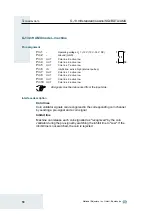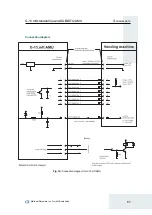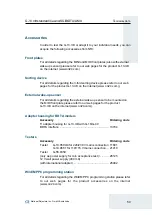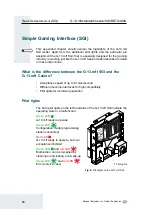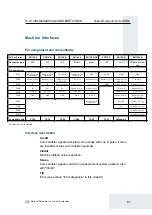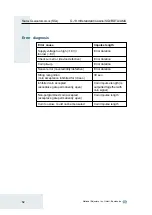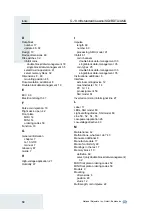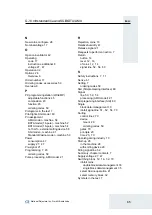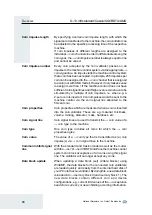
G
LOSSARY
G-13.mft standard/Casino/SGI/BDTA/AMU
68
National Rejectors, Inc. GmbH, Buxtehude
Coin impulse length
By specifying a certain coin impulse length, with which the
signals are transferred to the machine, the coin validator can
be adjusted to the specific processing time of the respective
machine.
If coin impulses of different lengths are assigned to the
individual
→
coin channels in order to differentiate among the
coin types, the
→
coin impulse number is always equal to one
and cannot be varied.
Coin impulse number
Every coin accepted by the coin validator passes on an
impulse to the machine control system via the appropriate
→
coin signal line. An impulse tells the machine control system
that a coin has been accepted. In principle, 255 impulses per
coin can be assigned to the
→
coin channel that is assigned
to a coin (not with AMU model). However, it only makes sense
to assign more than 1 if the machine control does not have
sufficient coin signal lines and if higher-value coins have to be
simulated by a multiple of coin impulses, i.e. when e.g. a
2-euro coin is inserted, 4 coin impulses would be sent to the
machine control via the coin signal line allocated to the
50-cent coin.
Coin properties
Coin properties which are measured when a coin is inserted
into the coin validator. These are e.g. material, thickness,
volume, minting, diameter, mass, hardness, etc.
Coin signal line
Coin signal lines are used to transmit the
→
coin value of a
→
coin type to the machine.
Coin type
One coin type includes all coins for which the
→
coin
properties agree.
Coin value
The value of a
→
coin type that is transmitted as (a) coin
impulse(s) via
→
coin signal lines to the machine.
Common inhibit signal
With the standard and Casino model as well as the model
line
with the
→
G-18/
→
G-40 BDTA interface the machine control
system can block acceptance of all coins using this signal
line. The validator will no longer accept any coins.
Data block update
When updating a data block (set) (2 data blocks) using
WinEMP, the data blocks for the connected coin validators
are loaded quickly and easily from the internal hard disk of
your PC into the coin validator. By doing this, a new data block
is loaded into
→
memory block 0 (and memory block 1). The
new data blocks contain different coin and device
configurations, e.g. current limit values of the
→
acceptance
bands for a currency or new inhibiting or sorting information.
Summary of Contents for NRI G-13.mft Standard
Page 2: ......



